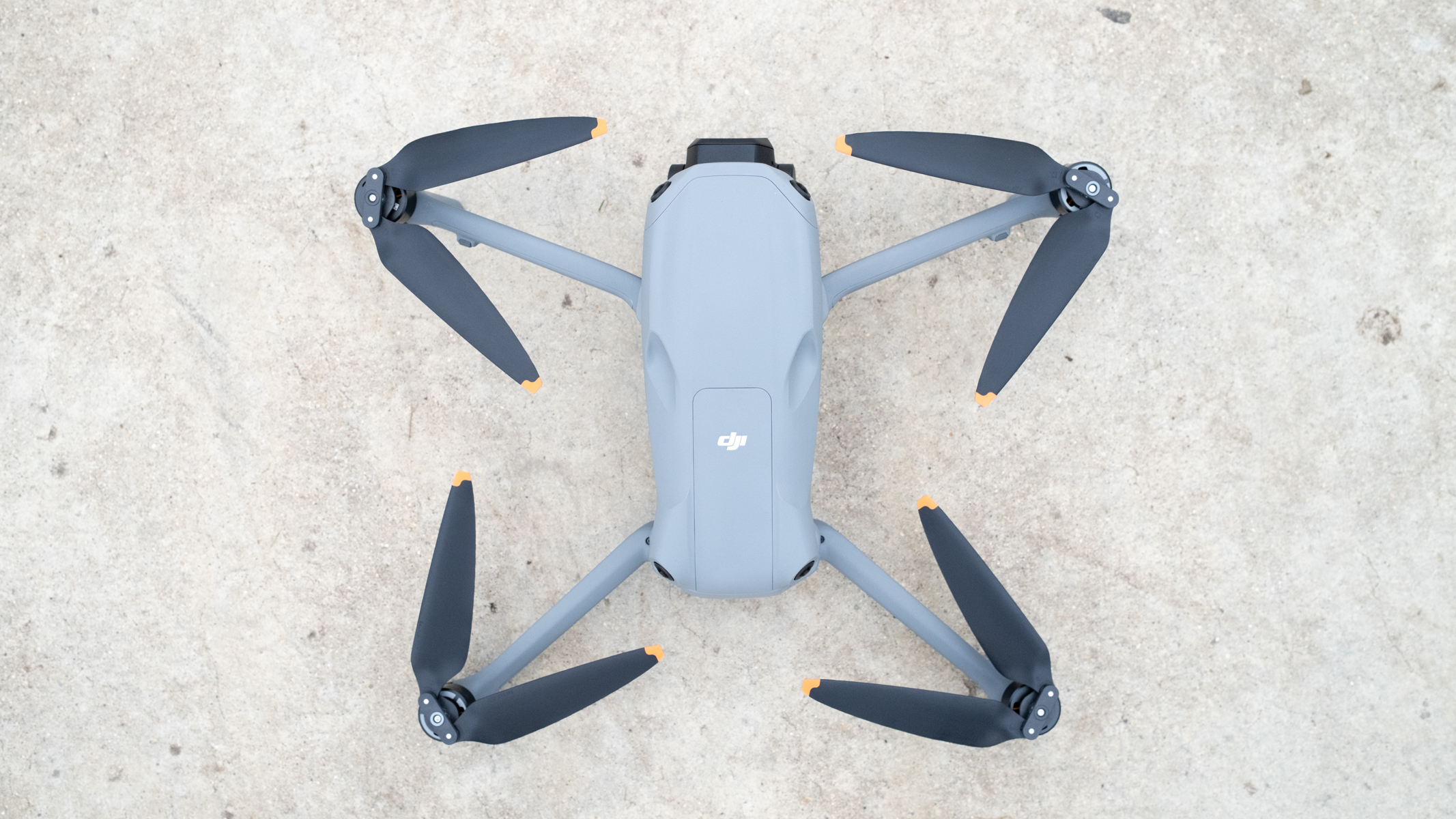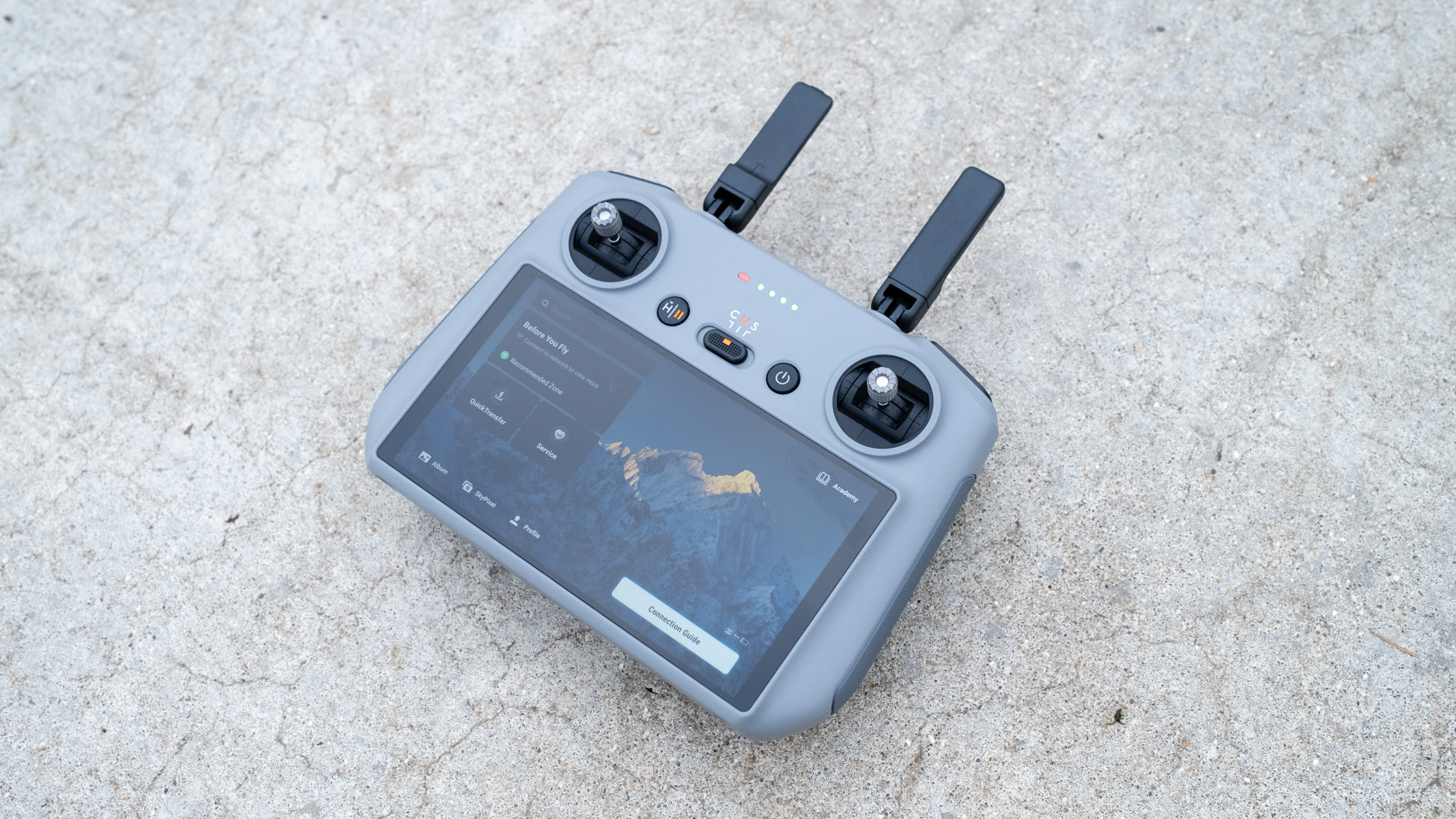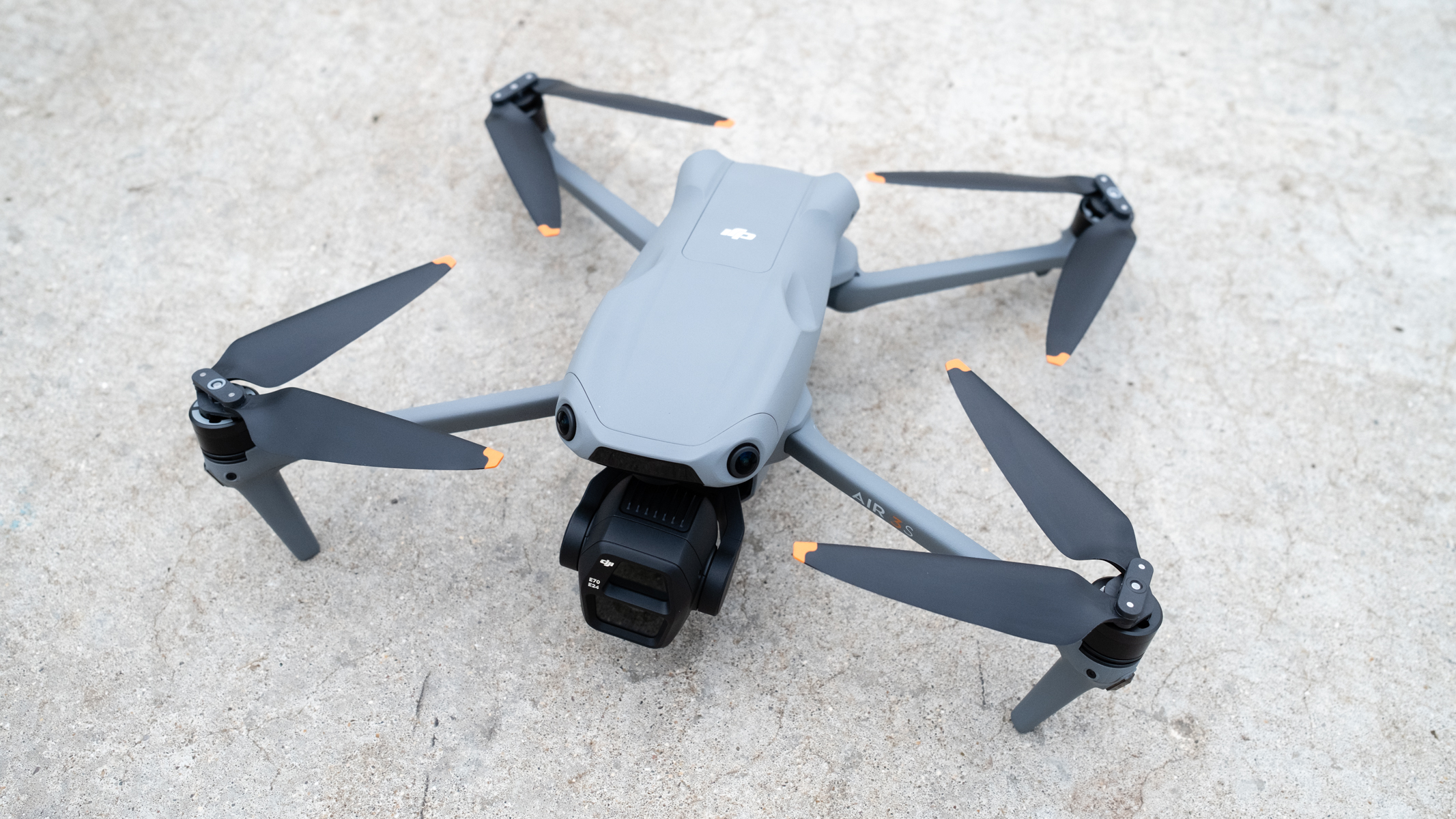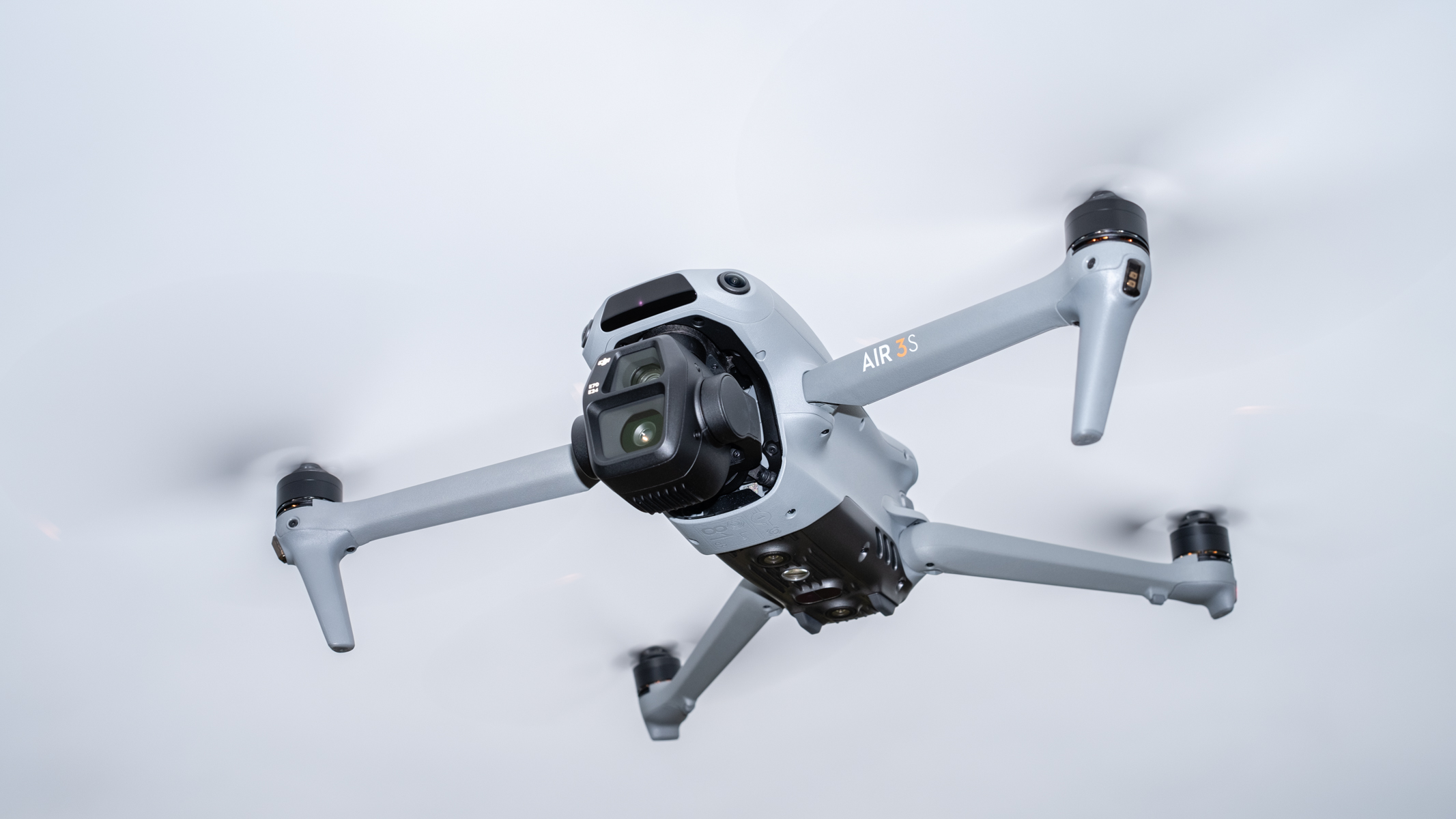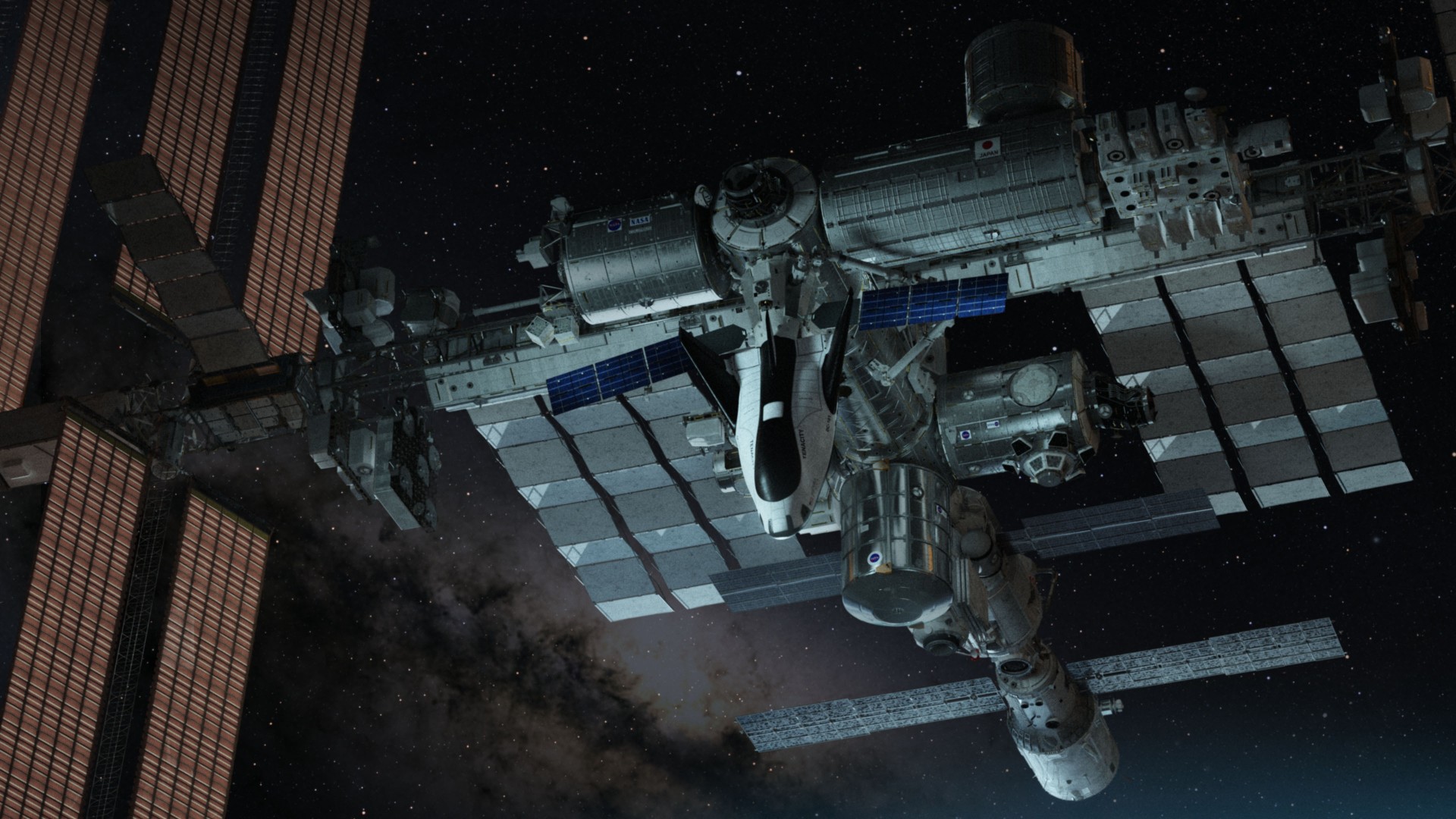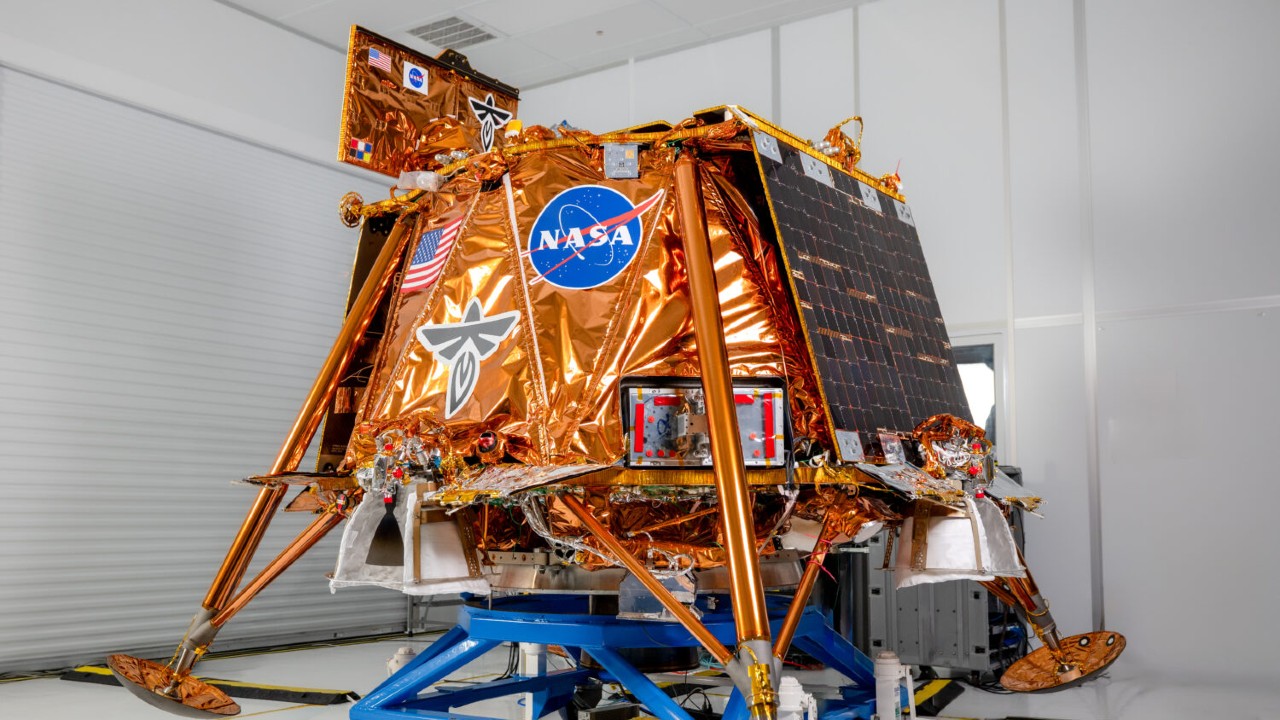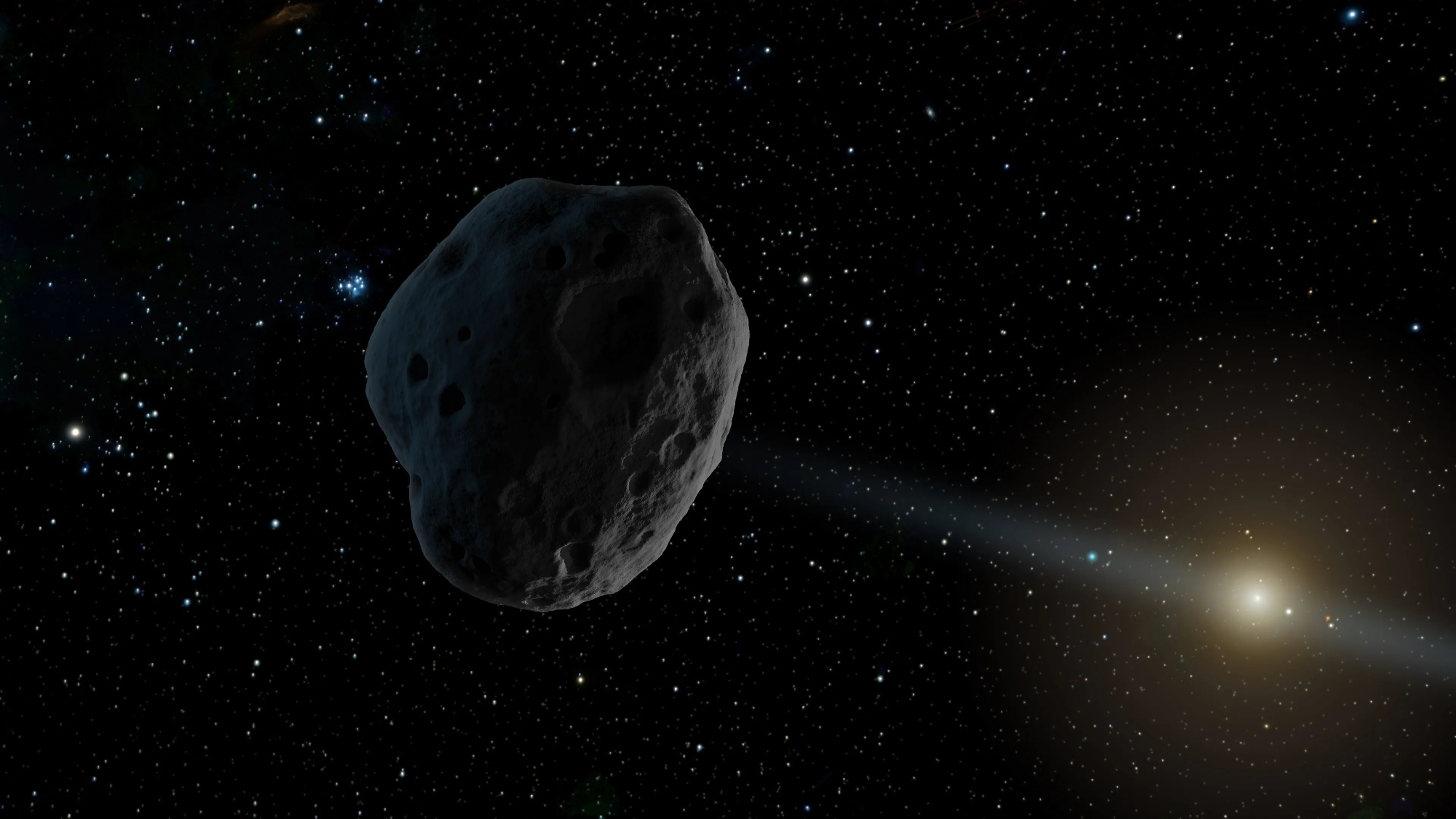Key specs
Camera: 50MP 1-inch CMOS & 48MP 1/1.3-inch CMOS
Video resolution: Up to 4K
Frame rates: 4K up to 120 FPS / FHD up to 240 FPS / 2.7K vertical up to 60 FPS
Battery: 4276 mAh / up to 45 minutes flight
Charger type: USB-C cable / battery charging hub
Modes: Cine, Normal, Sport
Video transmission range: 12.4 miles (FCC), 6.2 miles (CE/SRRC/MIC)
Dimensions: 8.43×3.96×3.51 in / 214.2×100.6×89.2 mm folded / 10.47×12.82×4.17 in / 266.1×325.5×106 mm
Weight: 25.54 oz / 724 g
It was with the DJI Air 2 and DJI Air 2S that DJI began to fork the road for some drone models. The Mavic 3 series then followed suit with several models available. As many have anticipated, we have now seen the release of the DJI Air 3S just over a year after the DJI Air 3.
The Air 3S is an impressive dual-camera drone. Although there are only a handful of upgrades, they are pretty impressive, making it a highly attractive mid-size drone.
Before we get into the details, you can be sure that the Air 3S is one of the best drones. Thanks to the impressive dual camera capable of producing excellent image quality for photos and videos, it is also one of the best camera drones. Reaching a level where a drone fits comfortably into these prestigious categories is no mean feat, but the Air 3S has casually flown into both.
Where the Air 3 sports two cameras using a 1/1.3-inch CMOS but with different focal lengths, the Air 3S features a 50MP 1-inch CMOS in the 24mm equivalent main camera, while the 70mm equivalent medium telephoto uses a 48MP 1/1.3-inch CMOS. Video can be captured in professional and enthusiast profiles up to 4K 120 FPS, while photos can be captured in Raw and JPEG at 12MP and the full resolution of each sensor.
Both Air 3 drones look practically identical. The main differences aside from the camera are improvements to the Omnidirectional Vision Sensing System, which includes forward-facing LiDAR and downward ToF sensors to make lowlight flying and the advanced Return to Home functionality safer and more reliable. Of course, there are other improvements, and we will delve into those later.
DJI Air 3S: Design
- Standard DJI folding design
- Level 6 wind resistance
- 42 GB of internal storage and a microSD slot
DJI consumer drones look remarkably similar and feature a practically identical folding design; this is where the propeller arms fold and twist out from a folded transport and storage position that makes the drone’s footprint significantly smaller to flight position when required. It’s a tried and tested design and clearly shows no signs of needing a revamp – it simply works.
Unfolded dimensions are arguably negligible because the drone is in the air most of the time in this state, but at 8.43 x 3.96 x 3.51 in / 214.2 x 100.6 x 89.2 mm with a weight of 25.54 oz / 724 g, you can see just how compact it is. This is, of course, way above the 250 g threshold, which means that the Air 3S, like the Air 3, is subject to greater restrictions and pilot requirements in most regions including both the US and the UK.
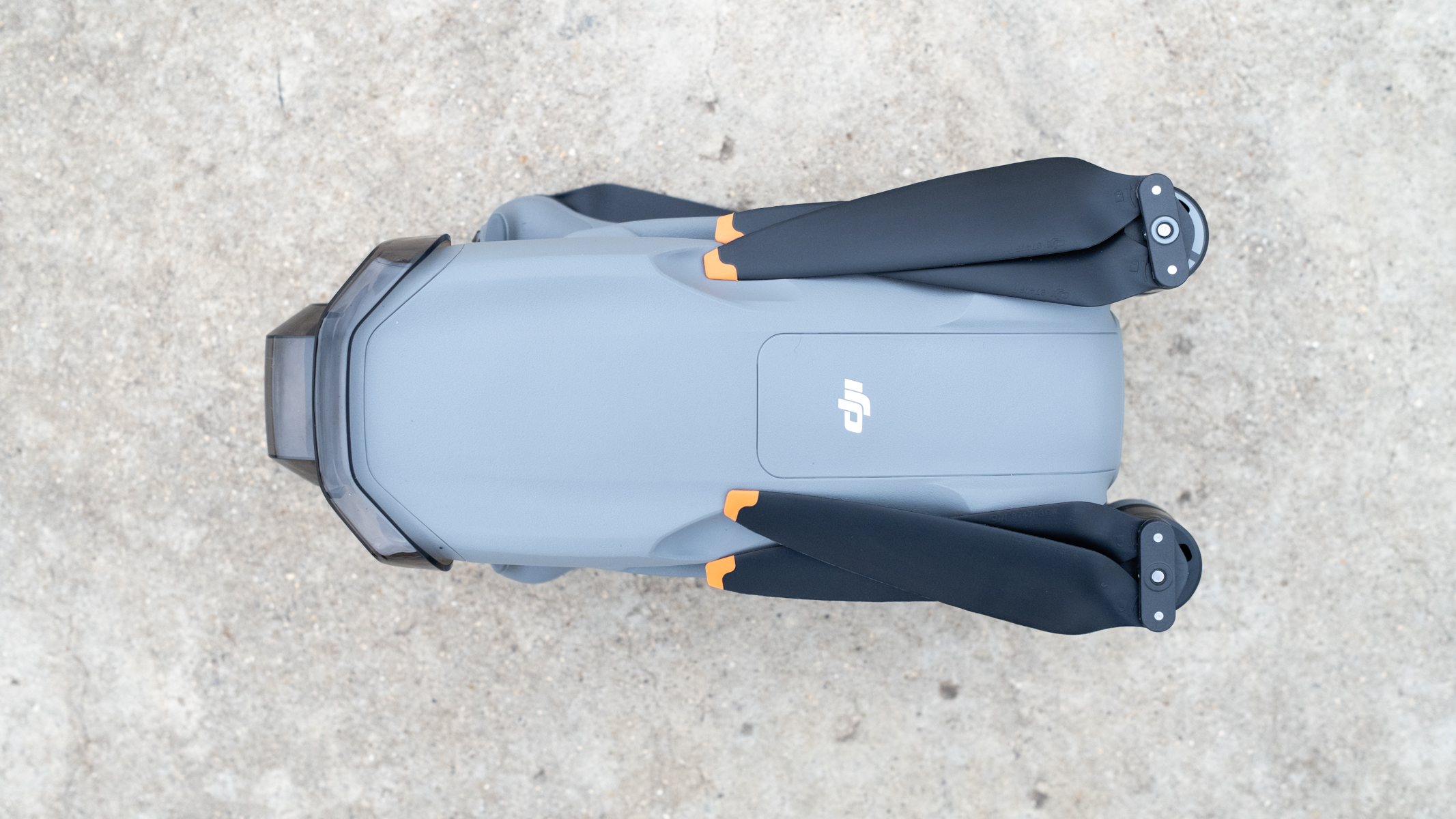
Despite this relatively compact size, weight aside because it is roughly three-quarters the weight of the DJI Mavic 3 Pro, it is a powerful and fast drone with some impressive credentials in this area.
The Air 3S has a 47 mph top speed, Level 6 wind resistance which equates to 27 mph and the 4276 mAh batteries provide up to 45 minutes of flight time. This couldn’t be fairly tested in the cool fall temperatures in the UK, but flight times per battery were never an issue.
The Air 3S also features 42 GB of internal storage and a microSD slot to expand storage potential if and when required. Plus, there’s a USB-C port that can be used for data transfer from the internal storage and/or to charge the currently installed battery. If you have the Fly More Combo, the included three-way charging hub is undoubtedly the better option for charging.
You can buy the drone with either the DJI RC-N3 controller, which is a standard controller that requires a smartphone running the DJI Fly app to be attached, or the DJI RC 2 smart controller, with its bright 700 nit 5.5-inch 1080p touchscreen and 32 GB of onboard storage. The DJI RC 2 is the more convenient of the two and doesn’t cost a huge amount more than the DJI RC-N3 Fly More Combo.
DJI Air 3S: Functionality
- Omnidirectional obstacle avoidance with forward-facing LiDAR
- New Free Panorama feature
- 10-bit 04 Video Transmission
In many respects, the Air 3S is the same drone as the Air 3, but it has a few aces beyond the improved camera that we will discuss in the next section. The most significant is the 360-degree omnidirectional obstacle avoidance, which has been upgraded with forward-facing LiDAR and downward infrared time-of-flight (TOF) sensors.
The LiDAR and downward TOF sensors aim to improve obstacle avoidance at night. This could not be tested in the UK because night operations require special authorizations from the CAA. However, their inclusion on the Air 3S can only benefit pilots in countries where night flights are allowed without jumping through complicated regulatory hoops.
One thing to bear in mind, however, is that collision avoidance, even in daylight, can never be fully relied upon because as effective as it is, and it is amazing, it is not a failsafe, and errors, however infrequent, can occur. So, pilot awareness always remains the most critical collision avoidance system with any drone and the two should supplement one another.
The DJI Air 3S features ActiveTrack 360° subject tracking, which is highly effective and aims to keep the subject sharp and in focus in the center of the frame. This feature utilizes the collision avoidance system and is designed to maintain an optimum flight path during automated subject-tracking flights.
The drone also uses the same DJI O4 HD video transmission technology that is used in the Air 3, which is claimed to be able to transmit 1080p 60 FPS video at up to 12.4 miles in the US and up to 6.2 miles in other regions. This could not be tested to its extreme, but suffice it to say that connection between the drone and controller was never an issue during testing within legal flight distances.
Other useful new features include the new free panorama mode where panoramic shots are manually selected rather than simply selecting a panorama preset option, and the results are stitched together in-camera. Then there is Off-State QuickTransfer, which lets you connect the Air 3S to a computer to download files without switching it on. It’s a simple feature that would have been great if it had been implemented in DJI drones long ago, but better late than never.
Finally, let’s not forget the DJI Cellular Dongle 2, which can be inserted directly into the Air 3S to provide 4G connectivity when there is interference or disconnection from DJI O4 HD video transmission. This is not a necessity for everyone, but for some pilots working in complex environments, it will provide enhanced reliability and peace of mind.
DJI Air 3S: Performance
- 24mm and 70mm equivalent cameras
- 1-inch sensor in the main camera
- Up to 4K 120 FPS 1080p 240 FPS video
Regarding camera performance, the Air 3S features a stunning pair of cameras that not only provide versatility for professionals and enthusiasts but also produce excellent image quality. The main camera is a real gem, and although it doesn’t offer an adjustable aperture like the Mavic 3 models’ main camera, you can use ND filters to control shutter speed when shooting video.
The main camera uses a 50MP 1-inch CMOS sensor and provides an equivalent focal length of 24mm, alongside a fixed f/1.8 aperture. Focus is from 1.64 ft / 0.5 m to infinity. The medium telephoto features a 48MP 1/1.3-inch CMOS sensor and offers a 70mm equivalent focal length, alongside a fixed f/2.8 aperture and focus from 9.94 ft / 3 m to infinity.
There’s also a digital zoom available for the cameras, but as always, the image quality drops as the zoom factor is increased since you’re cropping pixels rather than zooming optically. Overall image quality, as previously mentioned, is excellent from both cameras, with sharp and detail-packed photos and videos. There is a small amount of fall-off in sharpness towards the edges of the frame, but this is completely normal and minor.
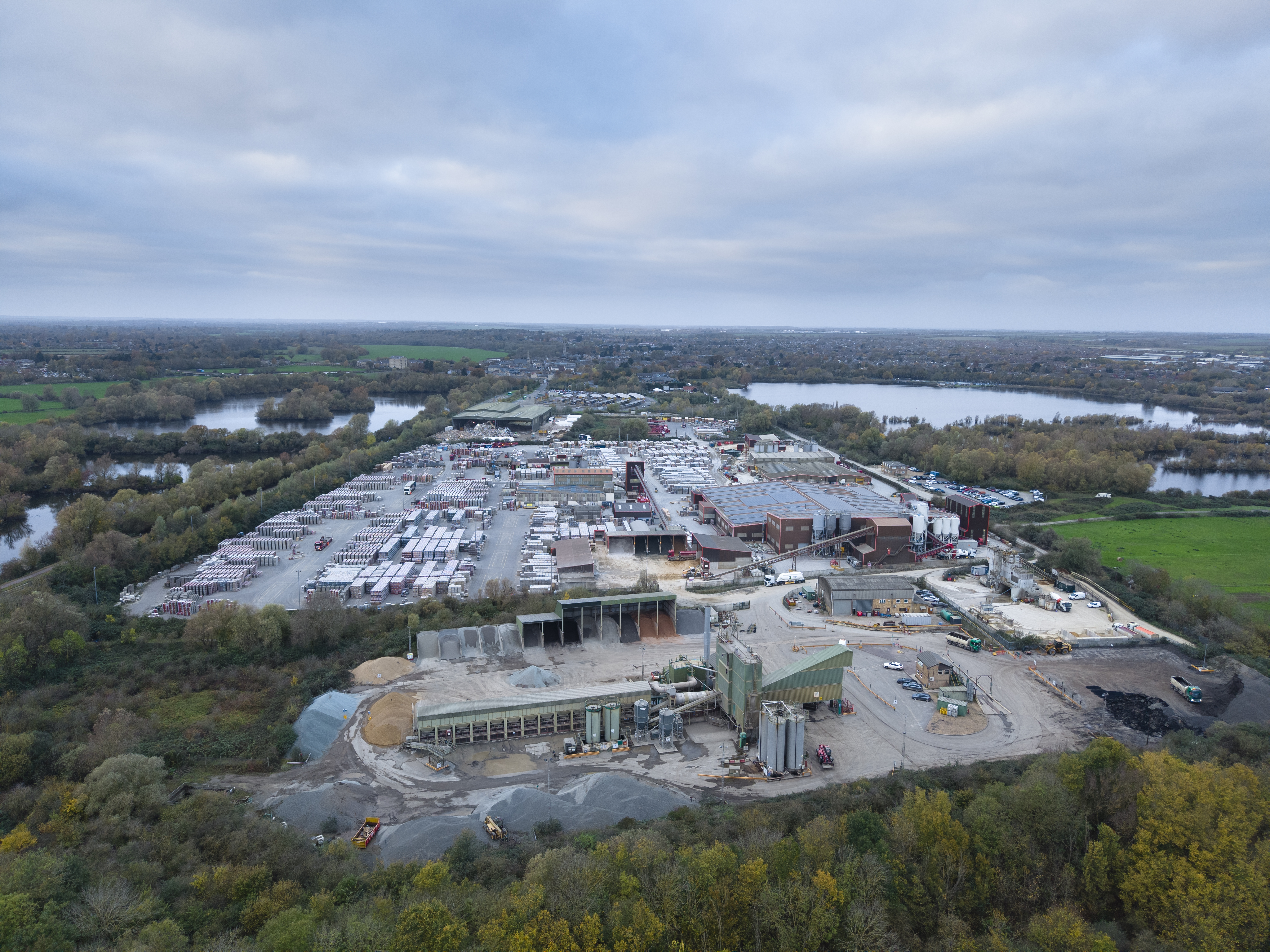
For photography, both cameras can be set to either their full resolution or 12MP if you only require a lower-resolution image. All resolution options allow for capture in RAW and JPEG formats, as well as all shooting modes including Automatic Exposure Bracketing (AEB) and Burst Shot, etc. Some DJI drones don’t allow for these modes to be used when shooting in their high-resolution option.
Both cameras can capture video in 4K at 24/25/30/48/50/60/120 FPS and in 1080p up to 240 FPS. For both 4K and 1080p video, capture at 120 and 240 FPS, respectively, requires the Slow Motion video option to be selected. 2.7K vertical video in 9:16 can be captured at 24/25/30/48/50/60 FPS, which is ideal for social media; this is a crop of landscape format rather than a rotation of the camera and gimbal like the Mini 3, 3 Pro and 4 Pro.
Please note the footage below was shot in 4K but our video player only plays in HD.
Video can be captured in Normal, HLG (HDR capture), and D-Log M color profiles with the former available in 8-bit and 10-bit with H.264 and H.265 encoding, and the latter two being 10-bit in H.265. This provides options for both straight-out-of-camera footage, which will appeal to enthusiasts, and flat profiles for professional workflows with color grading. Both cameras can also capture up to 14 stops of dynamic range, which is fantastic in high-contrast situations.
DJI Air 3S: Price
The Air 3S is available in three well-priced kit options considering the features on offer. It naturally sits between the DJI Mini 4 Pro and DJI Mavic 3 models in terms of cost and offers something different to both.
The standard kit uses the DJI RC-N3 controller and includes this, the drone, a battery, and a USB-C/PD cable. This base kit costs $1099 / £959. There are two Fly More Combos with the less expensive of the two offering the same controller as the standard kit, and this option costs $1,399 / £1,239.
The premium kit is the DJ RC N2 smart controller option, and this costs $1599 / £1,439. The Fly More Combos include everything in the standard kit alongside the relevant controller, two additional batteries, a shoulder bag, a three-battery charging hub, and an ND filter set with three filters to help with controlling shutter speed when shooting video or for creative photographic effects.
Should you buy the DJI Air 3S?
The DJI Air 3S is an excellent drone. Although the main camera doesn’t have an adjustable aperture like the Mavic 3 models, the Air 3S produces excellent image quality. The Omnidirectional Vision Sensing System, which includes forward-facing LiDAR and downward ToF sensors, makes lowlight flying and the advanced Return to Home functionality safer and more reliable.
This is also a fast and powerful drone with respectable flight times per battery, and this additional power alongside the weight makes it much more stable in windy conditions than the DJI Mini 4 Pro. Ultimately, the question you have to ask yourself is do you go for the Air 3S (this drone) or the Mavic 3 Pro. Both are excellent drones, but the Air 3S does have the edge in a few areas, including cost.
If this drone isn’t for you
If you would like a more powerful professional drone with three cameras, including an adjustable aperture in the main camera, the DJI Mavic 3 Pro is the flagship model and provides fantastic image quality and features.
The DJI Mini 4 Pro is the best sub-250 g camera drone available, and it’s much more regulator-friendly than the DJI Air 3S. Its photo and video quality are great, and its small size and light weight make it highly portable.
If you would prefer to capture FPV video, and photos are not important, the DJI Avata 2 is incredibly easy to fly with the DJI RC Motion 3 Controller. Flight is intuitive, even for beginners, and the quality of the 4K video is fantastic.

